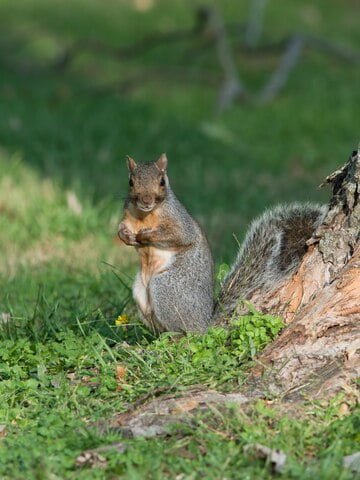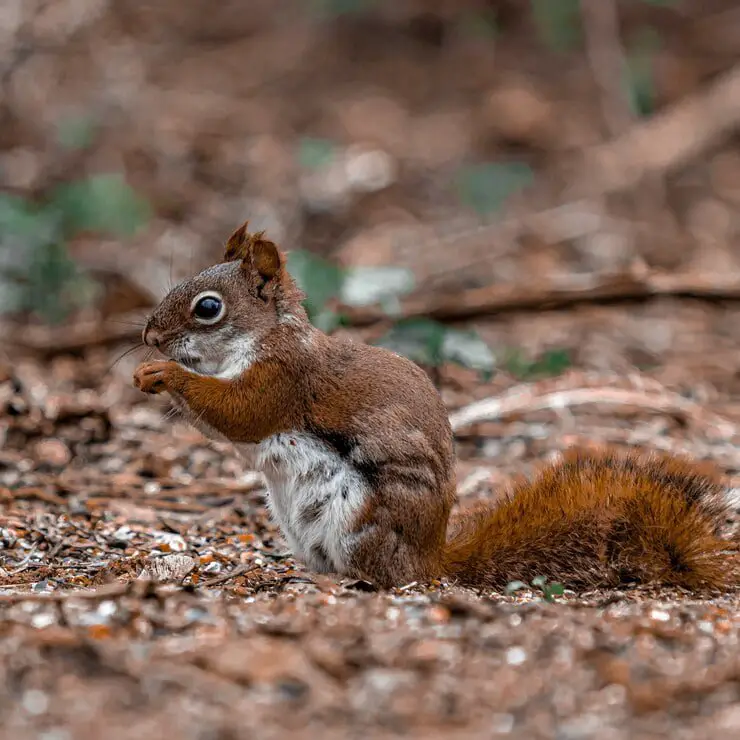Table of Contents
How to Get Rid of Ground Squirrel
Ground squirrels, often considered a nuisance due to their burrowing habits, can cause significant damage to gardens, lawns, and even the structural integrity of buildings. They are notorious for digging extensive blowout systems, which can weaken foundations, damage crops and create landscape hazards. Here is a detailed guide on how to effectively get rid of ground squirrels:

1. Identify and assess the problem.
Before taking action, it is important to correctly identify that the animals causing the damage are indeed ground squirrels. Ground squirrels are small, compact rodents commonly found in open fields, pastures, and residential yards. They are different from tree squirrels, which live in trees and aren’t known for making a big mess.
- Signs of ground squirrels: Look for burrow holes, usually about 2-4 inches in diameter, with mounds of dirt nearby. Ground squirrels are often seen during the day, especially in the early morning and late afternoon.
2. Exclusion Techniques to Get Rid of Ground Squirrel
Blocking ground squirrels from accessing certain areas is one of the most effective long-term strategies.
- Fencing: Build fences around gardens or other areas you want to protect. Use hardware cloth or wire mesh no larger than 1/2 inch. The fence should be buried at least 12-18 inches deep to prevent squirrels from digging under it and extend at least 2 feet above the ground.
- Tree protection: Wrap tree trunks with metal or plastic tree guards to prevent ground squirrels from climbing and damaging them. Make sure the guards are tall enough to prevent them from reaching over, even when standing on the hind legs.
3. Modification of Residence
Reducing the attractiveness of your property to ground squirrels can help prevent them from colonizing.

- Remove food sources: Ground squirrels are attracted to areas where there is a lot of food. Remove or store bird feeders, fallen fruit, nuts, and accessible pet food. Harvest fruits and vegetables as soon as they are ripe to prevent ground squirrels from eating them.
- Eliminate shelter: Ground squirrels prefer areas with dense vegetation or cover. Trim back overgrown bushes, remove brush piles, and keep mowing your lawn to reduce their hiding places. Filling in abandoned burrows can also prevent new squirrels from moving in.
4. Repellents to Get Rid of Ground Squirrel
There are various natural and chemical repellents available that can help deter ground squirrels.

- Castor Oil: Ground squirrels dislike the taste and smell of castor oil. Mix it with water and a few drops of dish soap, then spray it around burrow entrances and other places where squirrels are active.
- Garlic and Pepper: Ground squirrels are sensitive to strong smells. A mixture of crushed garlic and hot pepper dissolved in water can be sprayed around your garden to deter them.
- Commercial repellents: Several commercial products are designed to repel ground squirrels, often containing ingredients such as hunter’s urine, garlic, or hot peppers. These can be applied around your property, garden beds, or other areas you want to protect.
5. Getting stuck
Trapping is an effective way to reduce the ground squirrel population on your property, but it requires careful consideration of local laws and humane practices.
- Live Traps: Use live traps to humanely capture ground squirrels. Place traps near burrow entrances or along their travel paths, and line them with items such as peanut butter, nuts, or sunflower seeds. Once trapped, squirrels can be relocated to a suitable location away from your home. Be sure to check local regulations regarding wildlife migration.
- Snap Traps: In situations where live trapping is not possible, snap traps can be used. They should be placed in gullies or along well-used paths. Snap traps are deadly, so they should be used with caution, especially in areas where children or pets are present.
6. Eating poison to Get Rid of Ground Squirrel
Baiting with poison is a method of last resort because of the dangers it poses to non-target animals, pets and the environment.

Anticoagulant Baits: These baits cause internal bleeding in mice. They are commonly used in bait stations to reduce the risk to other wildlife and pets. Bait stations should be placed near burrows or in areas where ground squirrels are active.

- Zinc Phosphide Baits: This is a more potent poison that can kill ground squirrels with a single dose. It should only be used in accordance with local regulations and guidelines, as it poses significant risks to non-target species.
7. Fumigation to get rid of Ground squirrels
Fumigation can be effective for large infestations, especially when other methods have not been successful.
- Gas Cartridges: These cartridges release carbon monoxide or other toxic gases into the burrows, killing squirrels from the inside. The effectiveness of fumigation depends on the depth and complexity of the blow system. This is most effective in the spring and fall when squirrels are most likely to be in their burrows.
- Application: Carefully follow the instructions on the product, sealing all but one blow exit, where the cartridge will be inserted. After fumigation, monitor the area for any signs of activity and reapply if necessary.
8. Encouraging hunting of Ground squirrels
Encouraging natural predators can help control ground squirrel populations.
- Birds of prey: Owls, hawks, and other birds of prey are natural predators of ground squirrels. Installing nesting boxes or perches can attract these birds to your property.
- Pets: Dogs, especially terriers and other hunting breeds, can help keep ground squirrels at bay. Allowing your dog to patrol the yard can prevent ground squirrels from colonizing.
9. Monitoring and Maintenance of Ground Squirrel
After initial control measures have been taken, continued monitoring and care are essential to prevent reinfection.
- Regular inspections: Check your property regularly for signs of ground squirrel activity, such as new burrow openings or plant damage. Address any issues immediately to prevent them from becoming bigger problems.
- Reapply repellents: Natural and commercial repellents often need to be reapplied, especially after rain. Continue with the recommended re-applications to maintain their effectiveness.
- Fill burrows: After ground squirrels are removed, fill burrows with soil or gravel to prevent other squirrels from occupying abandoned burrows.
Conclusion
Getting rid of ground squirrels requires a multi-pronged approach that includes removal, habitat modification, repellents, trapping, and, in severe cases, fumigation or poisoning. By combining these methods, you can effectively reduce or eliminate the ground squirrel population on your property. Continued monitoring and maintenance are key to ensuring these pests do not return. Always consider environmental impacts and potential risks to non-target species when choosing your control methods, and consult local regulations to ensure compliance with wildlife protection laws. Read more

